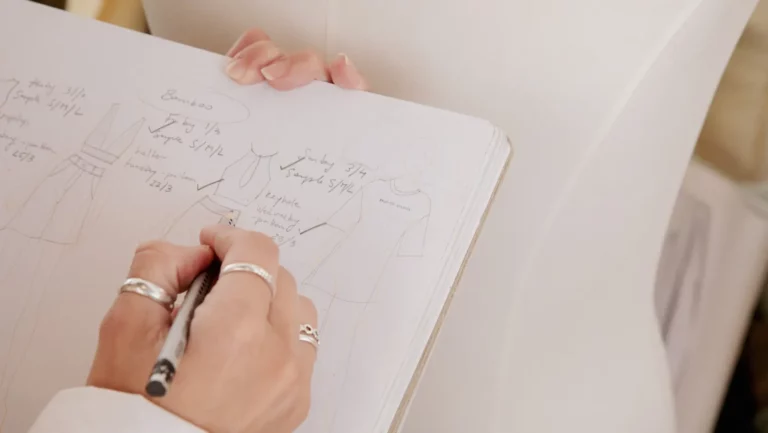Join our Newsletter receive 🎁
The State of Fashion 2025: Key Trends and Challenges for the Fashion Industry

The fashion industry is on the threshold of further changes. The State of Fashion 2025 report prepared by McKinsey & Company analyzes the most important trends and challenges that will shape the market in the coming years. Key topics include diversification of the supply chain, changes in consumer behavior, the growing importance of Asian markets and a new approach to sustainability and innovation.
Contents of the article
What awaits the fashion industry in 2025?
New Directions in the Supply Chain
Until a few years ago, most fashion brands based their production strongly on China. Today, companies are increasingly diversifying their sourcing to increase flexibility and resilience to geopolitical changes and reduce logistical risks.
- China's garment production is declining - between 2019 and 2023, the share of Chinese imports to the US declined by 6% and to the EU by 3%.
- The importance of other Asian markets is growing, such as India, Vietnam and Bangladesh, which are becoming key suppliers for global brands.
- Nearshoring is gaining momentum – production closer to target markets is becoming increasingly profitable. In the last five years, investments in nearshoring have increased by 20% for the US and 8% for Europe. In Europe, Turkey and North Africa are gaining importance, while in the US Mexico and Latin America are gaining importance.
The fashion industry is seeking more flexibility and security in the supply chain to better respond to changes in demand and geopolitical tensions.
New growth engines in Asia
For years, China has been the most important market for fashion brands, but its economy is slowing down, forcing the industry to look for new growth destinations in Asia.
- India is emerging as a key market for high-street brands - rising incomes, a growing population and the growth of e-commerce make it one of the most promising markets. Mango is already looking at India as one of the top 10 markets in its global strategy.
- Japan is emerging as a luxury leader - the luxury market in Japan is expected to grow by 8-12% in 2025, driven by spending by tourists and domestic consumers.
- Brands need to adapt their strategy to local preferences - Asia is not a monolith, so adapting sales and communication models to specific markets becomes a priority.
For fashion companies, expansion in Asia is a key part of their strategy for the next few years, but success will depend on their ability to adapt to local trends and consumer behaviour.
Changing values: consumers are choosing more wisely
Inflation, rising prices and economic uncertainty are all affecting consumer shopping. Customers are looking for more value in products, which is driving the rise in popularity of the resale and off-price market.
- Over 60% of consumers are actively looking for ways to save on clothing and accessories.
- The resale market in the US grew 15 times faster than the entire retail clothing sector in 2023, showing how strongly consumers are turning to second-hand stores and second-hand clothing platforms.
At the same time, the importance of value applies to every consumer - regardless of financial status. Even affluent customers want to make sure they are spending money on products that are really worth it.
For fashion brands, this means that building a strategy based on unique product value becomes more important than ever.
A sports market in a new era
The sports industry is undergoing a transformation, with a growing force of challenger brands - smaller companies that are effectively competing with giants such as Nike and Adidas.
- Between January and September 2024, the share price of brands such as Asics increased by 168%, On by 91% and Deckers by 38%, showing the increasing dominance of smaller, specialised brands.
- Customers are looking for innovation and specialised products that are more tailored to their needs than the mass lines of the major players.
Sports brands are diversifying their offerings and exploring new sales channels, for example by working with wholesalers or entering into partnerships with culturally relevant figures and brands.
Inventory management and profitability as a priority
In the face of slowing growth for fashion brands, inventory management and cost efficiency become crucial.
- In 2025, brands will emphasise profitability, minimising losses from inadequate orders and overproduction.
- In 2023, between 2.5 and 5 billion pieces of excess clothing will be on the market, demonstrating just how big a problem overproduction is.
- Building strong relationships with suppliers allows brands to optimise production processes and reduce costs.
The fashion industry needs to learn to better anticipate demand and avoid overstocking so as not to squeeze margins.
Sustainability and innovation in materials
Fashion is increasingly focusing on reducing emissions and using new technologies in textile production.
- Shifting production to countries with lower CO₂ emissions can significantly impact brands’ carbon footprints. For example, Pakistan has half the emissions of China, which could be key for companies striving for climate neutrality.
- H&M and Vargas Holding have launched the Syre initiative to develop polyester recycling technology on a mass scale.
- Companies are working with suppliers to fund decarbonisation projects and reduce production costs in greener conditions.
Sustainability is ceasing to be just a trend and is becoming a condition for survival. Brands that do not adapt to the new realities may lose competitiveness.
What does the future of the fashion industry look like?
The industry is facing changes that require flexibility, innovation and a sustainable approach. Fashion companies that want to succeed should focus on:
- Supply chain diversification and nearshoring.
- Expansion into Asian markets, especially India and Japan.
- Responding to growing customer expectations of value and quality.
- Inventory management and optimisation of production processes.
- Investing in sustainability and material innovation.
Subscribe to Fashion Editorial and stay up to date with the world of fashion!
Get the latest news from the world of fashion - trend analysis, exclusive reports and alerts on key industry events.
🎁 Gift for subscribers!.
No spam, only valuable content! We do not share your data with third parties. By subscribing, you agree with our Privacy Policy.






Add your first comment to this post